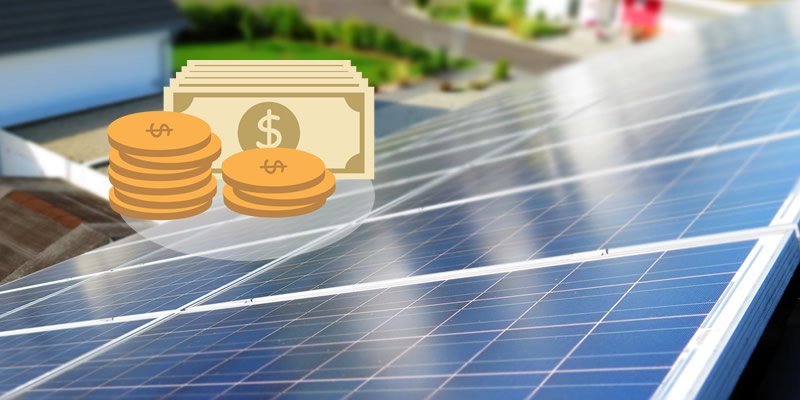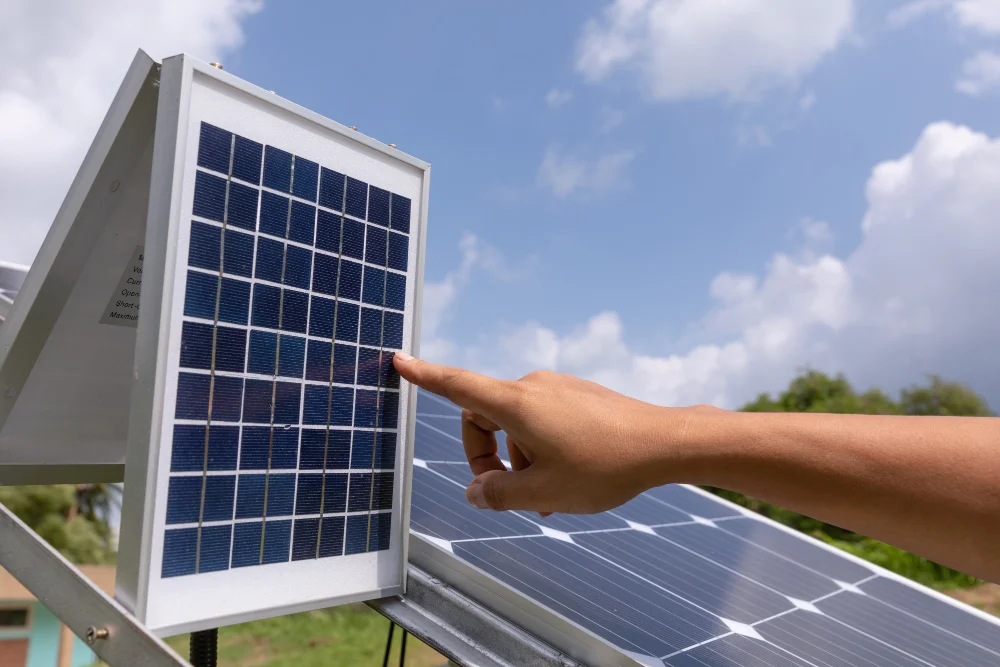It is not necessary to be a “greenie” to recognise that coal is not the way of the future (sorry Mr. Abbott). So, if you’re reading this, chances are you’re thinking about getting solar. Which of these is a positive step? So let’s get this party started. What are the five things you should know before going solar? During the day, millions of homes and business buildings in India, both urban and rural, have rooftops that receive abundant sunshine. These are perfect for capturing and turning the sun’s energy into electricity. This can be accomplished by installing an inverter, which converts the DC power provided by the solar rooftop panels to AC power, which is required by most appliances and electronics.
Although rooftops can be utilized to generate rooftop energy, there are several aspects to consider before installing solar panels on a rooftop.

On-grid system
One of these is the on-grid system, which connects the rooftop solar system to the main grid. When the rooftop solar system is unable to provide the required electricity, this method permits power to be drawn from the grid. As a result, a well-designed rooftop system may efficiently supply power without relying on grid power, saving money that would otherwise be spent on grid power. Because any extra electricity generated can be sent into the grid and compensated by DISCOMs via ‘net metering,’ this system can create cash.
Photovoltaic (PV) systems are generally divided into two major categories: grid-connected (also known as grid-tied) systems that are interfaced to an electricity grid and stand-alone systems that are self-contained. Since the 1990s the market has shifted decisively toward PV power plants and installations on buildings connected to an electricity grid. In 2000 grid-connected PV had overtaken stand-alone systems in global market share, and in 2016 more than 98% of solar cell production was being deployed in grid-connected systems.
Off-grid system
The off-grid system is one in which the rooftop solar system is not connected to the main grid. This system is self-contained and has its own battery. The battery is charged by the solar energy generated by the rooftop solar system, which is then used to power numerous applications. When there is no grid supply or when the supply is exceedingly irregular with frequent breakdowns, this technique comes in handy
Hybrid System
The third option is a hybrid system, which combines on-grid and off-grid power sources. Although a battery is utilized in this type of system, the advantage is that after the battery has been fully charged, the extra power generated is fed into the grid, generating additional cash for the consumer.
Possibility of using rooftops to generate electricity
The nature of the roof is critical in determining the practicality of house solar rooftop systems. The following are some of the aspects to consider:
The amount of sunshine accessible throughout the year, as well as the area available on the rooftop, are essential factors in calculating the amount of power that can be generated. By capturing one hour of direct sunshine, a typical residential solar panel may create roughly 290 watts. If the sun shines for 8 hours, the solar panel can generate 2320 watts of electricity.
The rooftop’s orientation in relation to the sun is critical. The panel should be oriented towards the south. If the roof is flat, solar panels should be installed at an angle pointing south to get the most sunshine. Furthermore, high-rise buildings should not obstruct the solar panels’ exposure to sunlight.
The cost of a solar rooftop system is influenced by the type of system that is chosen. Each variety has its own set of components; therefore, prices may vary.
How much of the rooftop should be used?
The maximum power that can be generated can be calculated based on the amount of sunshine available and the amount of space available on the rooftop. Furthermore, depending on the type of system – on-grid, off-grid, or hybrid – the homeowner can choose how much area on the rooftop will be used to generate electricity.

Cost-benefit
The homeowner can conduct a cost analysis and determine the amount of electricity required to be profitable. This could encompass both the quantity of power that can be sent to the grid to produce more cash and satisfy the homeowner’s power needs.
Solar rooftop systems are becoming increasingly popular as a source of electric power since they are renewable and abundant during the day. Implementing an appropriate rooftop solar system with careful planning can result in an endless supply of electric power with low recurrent costs.
Is solar energy a good fit for your home?
This is unquestionably the most important item to understand before installing solar panels. So, how can you know if your home is solar-ready? Here’s a list of “indicators” to look for when determining whether your home is solar-ready:
Solar panels don’t perform well in the shade, thus there should be very little of it. It’s best if there’s a lot of direct sunshine. So, if your property is in the shadow of a skyscraper or was built next to a colosseum, you might want to consider moving before going solar!
How much would you save on your electricity bill if you go solar? Solar doesn’t always work out well for everyone. You should have a power bill of at least $300 every quarter and utilise at least half of your energy during daylight hours to get the most out of your solar rooftop panels. This is more of a guideline than anything else. In general, the higher your electricity expense, the more benefit solar panels will provide.
The direction of the roof isn’t important right now. It is, nonetheless, critical. You should have a large North-facing roof to get the most out of solar rooftop panels (if you live in Australia). East-West cooperation is also possible. Especially for setups with an overloaded inverter.
Which Solar Panels and Inverters Should You Purchase?
There are numerous brands of solar panels and inverters to choose from. When selecting a solar panel or inverter, keep the following guidelines in mind:
Panels of solar energy:
Choose a business that has been in operation for a long time.
Avoid panels that try to pass themselves off as European or have special qualities.
Get a few quotations and choose a reasonable price and an excellent product rather than paying top dollar.
Inverter:
If you plan on staying in the house for a long time, pay top dollar for a high-quality product.
If you’re buying for a rental property or won’t be staying long, go for a low-cost panel.
What should your contract contain?
The contract you sign should include all the financial, ownership, and performance requirements. Because these systems can contain web-enabled equipment, you should also check to see if someone is collecting data on your home’s energy production and consumption, and who has access to it.
Conclusion
Going solar rooftop is a major step. Everything changes when you become aware of how much energy you consume. Your attitude toward energy usage shifts. Not only does it make you feel good about not having to pay those dictator power corporations wads of cash every quarter, but it also makes you feel good about doing something nice for the environment.

Take the next step in renewable energy by joining the Solarize Bharat pledge. Imagine your business not just as an entity benefiting from solar power but as a contributor to a nationwide movement, shaping the future of energy in our incredible nation.
Stay solar-powered and environmentally inspired!
P.S.: Share this blog with fellow solar rooftop enthusiasts to spread the word about the exciting world of solar energy!
